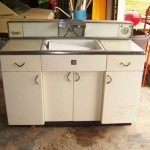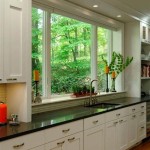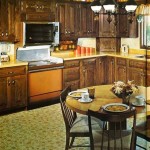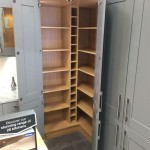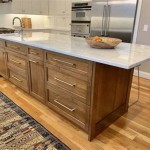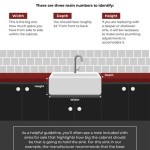Standard Kitchen Overhead Cabinet Depth: A Comprehensive Guide
Overhead kitchen cabinets, also known as wall cabinets, are a critical component of kitchen design, providing essential storage space for dishes, glassware, pantry items, and other kitchen necessities. One of the most important considerations when planning a kitchen layout is the depth of these cabinets. Standard depths are established to ensure both functionality and ergonomic accessibility. Understanding these standard depths is crucial for homeowners, designers, and contractors to create a kitchen that is both aesthetically pleasing and efficient.
The depth of overhead cabinets significantly impacts the usability of the countertops below. If the cabinets are too deep, they can make it difficult to work comfortably at the countertop, leading to back strain and a cramped feeling. Conversely, if the cabinets are too shallow, they may not provide sufficient storage capacity. Therefore, choosing the correct depth is a balancing act between accessibility and storage space.
This article will provide a detailed overview of standard kitchen overhead cabinet depths, discussing the common dimensions, the factors that influence depth selection, and the implications of deviating from these standards. It will also explore alternative cabinet depths and their suitability for various kitchen configurations and design preferences.
Understanding Standard Overhead Cabinet Depth Dimensions
The generally accepted standard depth for overhead kitchen cabinets is 12 inches. This dimension has become the industry norm due to a combination of ergonomic considerations, manufacturing efficiencies, and storage practicality. A depth of 12 inches typically allows for adequate storage of standard-sized dinner plates, glasses, and other frequently used kitchen items without encroaching excessively on the countertop workspace.
While 12 inches is the standard, it is important to understand that this dimension refers to the external depth of the cabinet, including the cabinet door. The internal usable storage space will be slightly less, typically around 11 inches, due to the thickness of the cabinet walls and the door itself. This slight reduction in internal depth should be factored in when planning the storage layout and determining whether the cabinets will accommodate specific items.
The prevalence of the 12-inch standard simplifies the design and manufacturing processes, leading to cost efficiencies. Cabinet manufacturers can produce cabinets in large quantities, knowing that this depth will meet the needs of a majority of homeowners. This standardization also makes it easier for designers and contractors to plan kitchen layouts, as they can rely on readily available cabinet options and predictable installation procedures.
It’s also worth noting that the 12-inch standard typically applies to cabinets that are installed above base cabinets with a standard depth of 24 inches. This combination provides a balanced upper and lower cabinet system, with sufficient countertop space for food preparation and other kitchen tasks. The standard height of overhead cabinets is also crucial for ergonomic accessibility and visual harmony.
Factors Influencing the Choice of Cabinet Depth
While 12 inches is the standard, the ideal depth for overhead kitchen cabinets can vary based on several factors, including kitchen size, layout, and personal preferences. A smaller kitchen may benefit from shallower cabinets to maximize space and prevent a cramped feeling. Larger kitchens, on the other hand, may be able to accommodate deeper cabinets for increased storage capacity.
The layout of the kitchen also plays a significant role. In kitchens with islands or peninsulas, the overhead cabinets may need to be shallower to ensure adequate clearance for comfortable movement around the island or peninsula. Similarly, in kitchens with tight corners, shallower cabinets may be necessary to allow for easy access and prevent obstruction of walkways.
Personal preferences regarding storage needs and aesthetic design can also influence the choice of cabinet depth. Homeowners who have a large collection of dishes or glassware may opt for slightly deeper cabinets to accommodate their storage requirements. Conversely, those who prefer a minimalist aesthetic may prefer shallower cabinets to create a more open and airy feel.
The height of the individuals who will be using the kitchen is another important consideration. Shorter individuals may find it difficult to reach items in deep overhead cabinets, making shallower cabinets a more practical choice. Conversely, taller individuals may prefer deeper cabinets to maximize storage space and avoid stooping to reach lower shelves.
The style of the kitchen cabinets can also impact the perceived depth. Cabinets with recessed panels or decorative moldings may appear deeper than they actually are, while cabinets with flat fronts may appear shallower. Therefore, it’s important to consider the overall aesthetic of the cabinets when choosing the appropriate depth.
Finally, the type of items to be stored in the overhead cabinets should be considered. If the cabinets will primarily be used to store small items, such as spices or canned goods, shallower cabinets may be sufficient. However, if the cabinets will be used to store larger items, such as pots, pans, or serving dishes, deeper cabinets may be necessary.
Alternative Cabinet Depths and Their Applications
While 12 inches is the standard, alternative depths for overhead kitchen cabinets are available to accommodate specific design needs and preferences. These alternative depths range from shallower options, such as 9 inches or 10 inches, to deeper options, such as 13 inches or 15 inches. Each depth has its own advantages and disadvantages, and the choice of depth should be carefully considered based on the specific requirements of the kitchen.
Shallower cabinets, typically in the 9-inch to 10-inch range, are often used in smaller kitchens or in areas where space is limited. These cabinets can help to create a more open and airy feel, and they can also be useful for storing smaller items, such as spices, mugs, or small plates. However, shallower cabinets may not be suitable for storing larger items, such as dinner plates or serving dishes.
Deeper cabinets, typically in the 13-inch to 15-inch range, are often used in larger kitchens or in areas where maximum storage capacity is desired. These cabinets can provide ample space for storing larger items, such as pots, pans, serving dishes, and even small appliances. However, deeper cabinets can make it more difficult to reach items in the back, and they can also encroach on the countertop workspace.
Another alternative is to use a combination of different cabinet depths in the same kitchen. For example, shallower cabinets could be used near the sink to provide easy access to frequently used items, while deeper cabinets could be used in other areas to maximize storage capacity. This approach allows for a customized storage solution that meets the specific needs of the homeowner.
Open shelving is another alternative to traditional overhead cabinets. Open shelving can create a more open and contemporary feel, and it can also be a good way to display decorative items. However, open shelving does require more frequent cleaning, as items on the shelves are exposed to dust and grease. Additionally, open shelving may not be suitable for storing items that need to be kept out of sight.
The use of glass-front cabinets can also affect the perceived depth of overhead cabinets. Glass-front cabinets can create a more open and airy feel, and they can also be a good way to showcase attractive dishes or glassware. However, glass-front cabinets require more attention to organization, as the contents of the cabinets are visible.
Ultimately, the choice of overhead cabinet depth is a personal one that should be based on a careful consideration of the factors discussed above. By understanding the standard depth, the factors that influence depth selection, and the available alternatives, homeowners, designers, and contractors can create a kitchen that is both functional and aesthetically pleasing.
Proper planning and consideration of these factors will contribute to a successful kitchen renovation or design project, ensuring that the overhead cabinets provide adequate storage without compromising the functionality or aesthetics of the space.

Overhead Kitchen Cabinets Dimensions Google Search Measurements Cabinet Height

N Standard Kitchen Dimensions Renomart

Kitchen Measurements

What Are The Perfect Kitchen Dimensions Amp Standard Size

What Is The Standard Depth Of A Kitchen Cabinet Dimensions Cabinets Height Wall Units
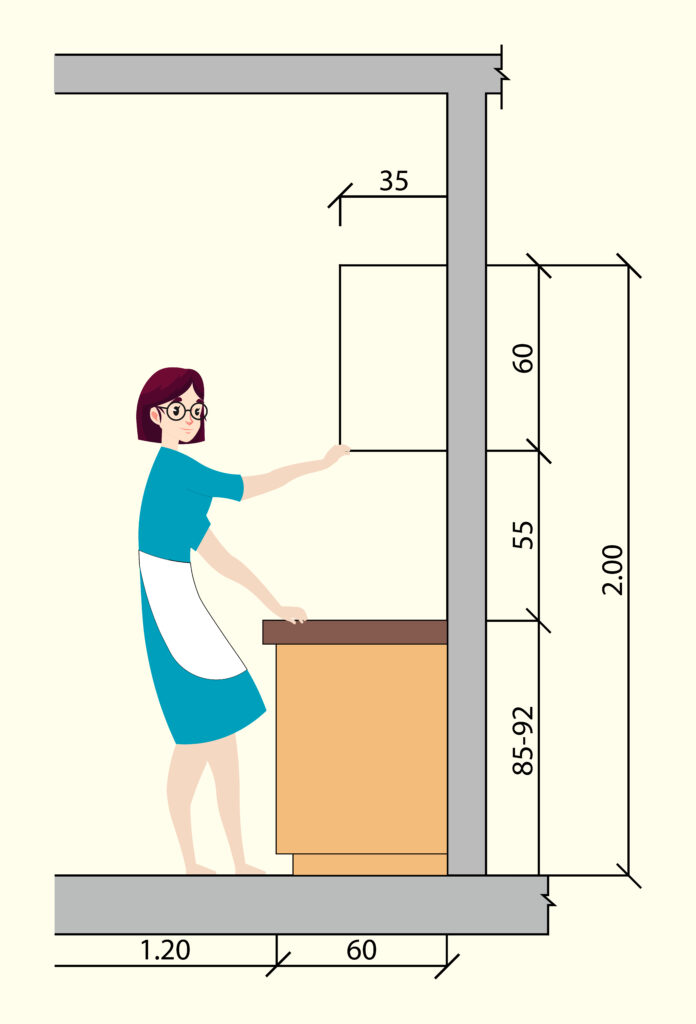
Know Standard Height Of Kitchen Cabinet Before Installing It
Kitchen Renovation Size Requirements 1 Rona

Diy Kitchen Quality Designer Cabinet Dimensions Cabinets Height Measurements

Standard Kitchen Cabinet Dimensions For Your Homee Design Cafe

Standard Kitchen Cabinet Dimensions For Your Homee Design Cafe
Related Posts


